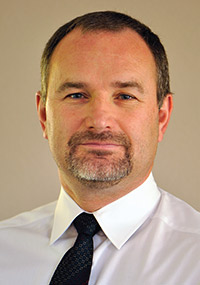
Robert Coleman
We spoke with Second Chance Executive Director Robert Coleman, who heads the nonprofit designed to help find work for the “hardest to serve”—the formerly homeless, those with a criminal history, health issues, suffer from addiction, or are right out of school. Based in San Diego, California, Second Chance is now in its twentieth year helping provide job readiness training, educating and supporting people to get back into the workforce.
Q. Tell me more about your organization.
We know that giving someone a job leads to so many other things that they can stabilize in their life, whether that’s housing, getting back their children, or maybe issues of self-esteem. If we can help people get back to work, then they have a chance of a future they yearn for. Many know it’s what they want, but to date they’ve been unsuccessful. There are many reasons why people will find themselves at Second Chance, but their destination is the same.
At Second Chance, if people present themselves as homeless, we have accommodations. If they have addiction, typically relationships around them have been damaged completely. So if that’s a hurdle, we have an in-house mental health team to help. If one does not have the clothes for an interview, we have a vast quantity of new clothing to choose from. What we try to do is remove the excuses and reasons why someone can be unsuccessful. Then it comes down to one’s behavior and attitudes towards getting back to work.
Q. How does the organization give second chances to people who need them?
We provide four weeks of training, and at the end, if one graduates, we support one for the next two years. Employers hire because of one’s attitude; that is something one has to come with. So the first two weeks focus on people’s attitude and behavior. For some of these people that have had years of incarceration, their ways of communicating and acknowledging people is not going to help them in society or to a future employer. We teach them how to walk up to someone, smile at them, and shake their hand. We start from that basic interaction of how to introduce one’s self. The second week is teaching them how to use a computer, Word, Excel, the internet, and how to construct a résumé and set up an email address.
Q. What kind of jobs do people get placed into?
From 2003 to mid-2012, we placed 3,700 people back into employment, with an average staffing wage of $10.05. The majority of those went into sales and related jobs; food preparation and related jobs; office and administration support; installations, maintenance, and repair; construction; transportation and material moving; and building and grounds cleaning and maintenance. We have a lot of relationships with many different employers, and employers often come to us with vacancies. We then place the right people into those vacancies.
Q. How do people in need get connected to you?
We have a small number of people in every class that were sent to us by the court. A vast majority find out through word of mouth, through family, friends, parole officers, and counselors.
Q. How do people get involved in the program if they would like to help?
There are many ways people can help at Second Chance. One of the things we do at the end of the four weeks is to conduct mock interviews. We always need volunteers to help conduct these. One could also help teach those without good literacy skills. We also have our own board of directors, another way to get involved.






